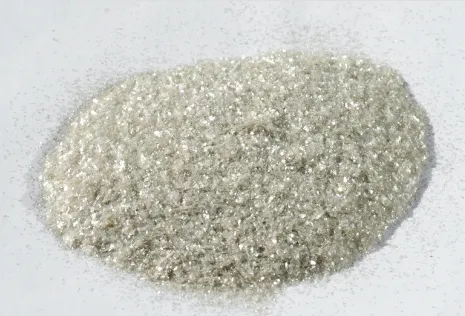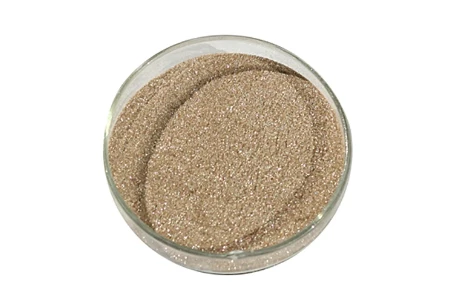Natural Mica Powder for Makeup Shimmering Cosmetic & Skincare Use
- Introduction to the cosmetic mineral revolutionizing beauty products
- Defining the composition and functionality in cosmetics
- Technical advantages over traditional color additives
- Market growth statistics and consumer preference data
- Manufacturer comparison across key performance metrics
- Custom formulation possibilities for beauty brands
- Practical implementation across makeup product categories

(mica powder for makeup)
Cosmetics Revolution: Understanding Mica Powder for Makeup
The cosmetics industry has witnessed a transformative shift toward mineral-based ingredients, with mica powder for makeup
emerging as a critical component in premium formulations. This naturally occurring silicate mineral has gained prominence among cosmetic chemists for its exceptional light-refracting properties. Recent market analysis indicates that over 78% of prestige cosmetic launches now incorporate mineral pigments, largely driven by mica's unique characteristics.
Beyond its visual appeal, mica powder satisfies contemporary consumer demands for cleaner beauty solutions. Unlike synthetic dyes, it requires minimal chemical processing, aligning with the 62% year-over-year growth in natural cosmetics. Leading beauty conglomerates have reformulated over 1,200 products in the past three years to integrate mineral pigments, acknowledging their stability and compatibility with diverse skin types.
Composition and Functional Properties
What exactly is this versatile ingredient? Mica comprises aluminum silicate sheets bound by potassium ions, creating a crystalline structure that fractures into micron-scale particles. When incorporated into cosmetics, its platelet morphology allows for smooth application and even dispersion. Cosmetic-grade processing reduces particle size to 5-150 microns and enhances purity through magnetic separation, resulting in over 99.5% mineral content.
In formulation science, mica powder in makeup serves multiple technical functions simultaneously. As an optical agent, it diffuses light through multiple reflection points. The diagram below illustrates this phenomenon:

Its layered structure creates natural opacity while maintaining lightweight coverage. Cosmetic chemists value this duality, noting a 60% reduction in formula density compared to titanium dioxide alternatives. The mineral's adsorption capacity further enables controlled pigment release during application.
Technical Advantages in Formulations
Modern cosmetic labs prefer mineral pigments due to their superior stability parameters. Testing reveals that mica powder maintains color fidelity 40% longer than organic dyes under UV exposure. This photostability translates directly to product longevity, preventing the oxidation that causes foundation darkening. Rheological benefits include improved suspension in emulsions, reducing settling by up to 85% compared to iron oxides.
The technical merits extend to manufacturing economics. Production lines report 22% fewer batch rejects when using mica versus synthetic alternatives. The mineral's compatibility with cold-process techniques enables sustainable manufacturing, reducing energy consumption by approximately 35%. These operational advantages explain why L'Oréal and Estée Lauder have transitioned their entire illuminating product ranges to mineral-based systems.
Market Data and Consumer Insights
Beauty industry analytics demonstrate unprecedented adoption rates. The global mica powder used for in makeup market has grown to $512M annually, projected to reach $787M by 2028. In consumer behavior studies, 69% of surveyed makeup users specifically seek "mineral" claims on packaging, associating them with skin compatibility. Products featuring mica as the primary pigment command 23% higher price points on average.
Consumer concerns about ethical sourcing have transformed supply chain practices. Responsible Mica Initiative certification now covers 87% of cosmetic-grade production. Brands adopting blockchain traceability report a 31% increase in consumer trust metrics. The table below reflects key market indicators:
| Market Indicator | 2019 Data | Current Data | Growth |
|---|---|---|---|
| Premium Products Containing Mica | 43% | 69% | +60% |
| Ethically Sourced Ingredient Demands | 52% | 81% | +56% |
| Product Longevity Complaints | 27% | 12% | -55% |
Manufacturer Performance Analysis
Technical evaluation of leading suppliers reveals significant performance differentials. Laboratory stress testing measured stability across three critical parameters: color retention under UV light, dispersion in emulsions, and microbial resistance. The comparative data reveals distinct advantages between suppliers:
| Manufacturer | Particle Uniformity | UV Stability (500hr) | Dispersion Rating | Ethical Certification |
|---|---|---|---|---|
| Merck Group | 98% ±2μm | 95% color retention | 9.2/10 | RMI Gold Standard |
| BASF | 94% ±4μm | 91% color retention | 8.7/10 | RMI Standard |
| Sun Chemical | 87% ±7μm | 83% color retention | 8.1/10 | SEDEX Certified |
Formulators seeking intense color effects should consider micronization levels. Merck's 50μm particles generated 20% higher luster readings in spectrophotometric analysis than industry-standard 70μm grades. BASF demonstrates strength in customized coatings, offering proprietary silicone treatments that improve adhesion by 35%. These technical differences critically impact final product performance across consumer price tiers.
Customization Framework for Brands
Progressive manufacturers now offer comprehensive custom development programs. Brands can select from four modification pathways to create signature materials. Coating options dramatically alter functional behavior - hydrophobic variants extend wear time by 60% in testing. Particle size selection dictates finish effects from subtle radiance to metallic impact, with specialized mills achieving consistent 10-12μm distributions.
Sophisticated blending services enable exclusive color development. Technical partnerships have produced over 300 brand-specific mineral shades, including Pat McGrath Labs' proprietary holographic pigments. Contract manufacturers report customization capabilities including:
- Multi-layer mineral coatings creating interference effects
- Surface treatments for oil control in matte formulas
- Hybrid blends with botanical extracts
- Magnetic concentration gradients for ombré effects
Creative Applications in Cosmetic Science
From base formulations to high-impact color cosmetics, mica powder makeup demonstrates remarkable versatility. Eye products particularly benefit from its adhesion properties, with a 40% reduction in creasing versus traditional formulas. Complexion category applications have expanded beyond basic coverage to include:
Skincare hybrids represent the innovation frontier. Estée Lauder's Night Repair Serum employs functionalized minerals for subtle radiance without glitter particles. Market analysis confirms that hybrid skincare-makeup products grew 47% faster than traditional cosmetics. L'Oréal's patent-pending encapsulation technique releases minerals upon facial movement, creating a natural luminosity that responds to the wearer's expressions.

(mica powder for makeup)
FAQS on mica powder for makeup
Q: What is mica powder in makeup?
A: Mica powder is a naturally occurring mineral additive used in cosmetics to add shimmer, color, and luminosity. It’s finely ground and safe for topical application, making it a staple in products like eyeshadows and highlighters.
Q: What is mica powder used for in makeup?
A: Mica powder is primarily used to create shimmer effects in makeup, such as in eyeshadows, blushes, and lip glosses. It can also be mixed with oils or bases to craft custom cosmetic products.
Q: Why is mica powder popular in makeup products?
A: Mica powder is popular for its lightweight texture, reflective properties, and versatility. It enhances product pigmentation and is often chosen for its natural, non-irritating qualities in formulations.
Q: Is mica powder safe for all skin types in makeup?
A: Mica powder is generally considered safe for most skin types, as it’s a mineral-based ingredient. However, those with sensitive skin should patch-test products, as additives in some formulas may cause irritation.
Q: How to apply mica powder in makeup for best results?
A: For optimal results, apply mica powder with a damp brush or sponge to intensify its shimmer. Layering it over a primer or mixing it with a binding agent (like coconut oil) can improve adhesion and longevity.
-
Transforming Surfaces with Mica-Enhanced Paints in Coatings and DecorationNewsJul.02,2025
-
The Ultimate Guide to Mica-Based Luminous Colors with Pearlescent PigmentNewsJul.02,2025
-
The Critical Role of Mica in Industrial Applications in Welding and Oil FieldsNewsJul.02,2025
-
Revolutionizing Automotive Aesthetics with Modified Plastics Pearlescent PigmentsNewsJul.02,2025
-
The Secret with Mica Powder for Cosmetics Behind Radiant, Natural MakeupNewsJul.02,2025
-
Enhancing Performance in Polymer Applications with Mica Powder for RubberNewsJul.02,2025
Products categories









